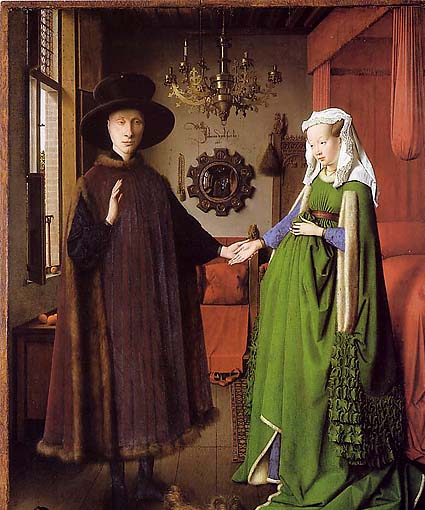With the wedding season upon us this week’s picture is arguably the world’s most famous painting of a married couple: the so-called “Arnolfini Marriage”, by the Flemish master Jan Van Eyck. It can be seen at the National Gallery.
Van Eyck’s memorably arresting depiction of a whey-faced gentleman and his inscrutable bride, solemnly holding hands in a richly decorated interior, is also the earliest extant example – in post-classical Western art – of a pure portrait of people who were not royalty. Soon secular portraits of this kind would become commonplace, but at the time of its creation the work was unusual and possibly unique. The painter signed the work with a flourish, in the form of a graffito on the wall behind the couple. “Johannes de Eyck fuit hic,” it declares, in fine curlicues and tendrils of Gothic script; “Jan van Eyck was here”. Just below, he has added the date: 1434.
Despite the painting’s traditional title, “the Arnolfini Marriage”, it is uncertain that the people depicted in it really are Mr and Mrs Arnolfini. The earliest description of the painting was written some eighty years after it was painted: “a large picture which is called Hernoul le Fin with his wife in a chamber”. The hypothesis that “Hernoul le Fin” might be a clumsy phonetic spelling of “Arnolfini”, the name of a prominent family of merchants originally from Lucca but active in Burgundy in van Eyck’s time, has since gained credence. But in truth the identification remains little more than an ingenious, tentative suggestion. The sitters do not look remotely Italian to me.
It used to be thought that the painting shows a private marriage ceremony but this too has recently been questioned and now seems unlikely. Never the less, everything about van Eyck’s painting suggests...


